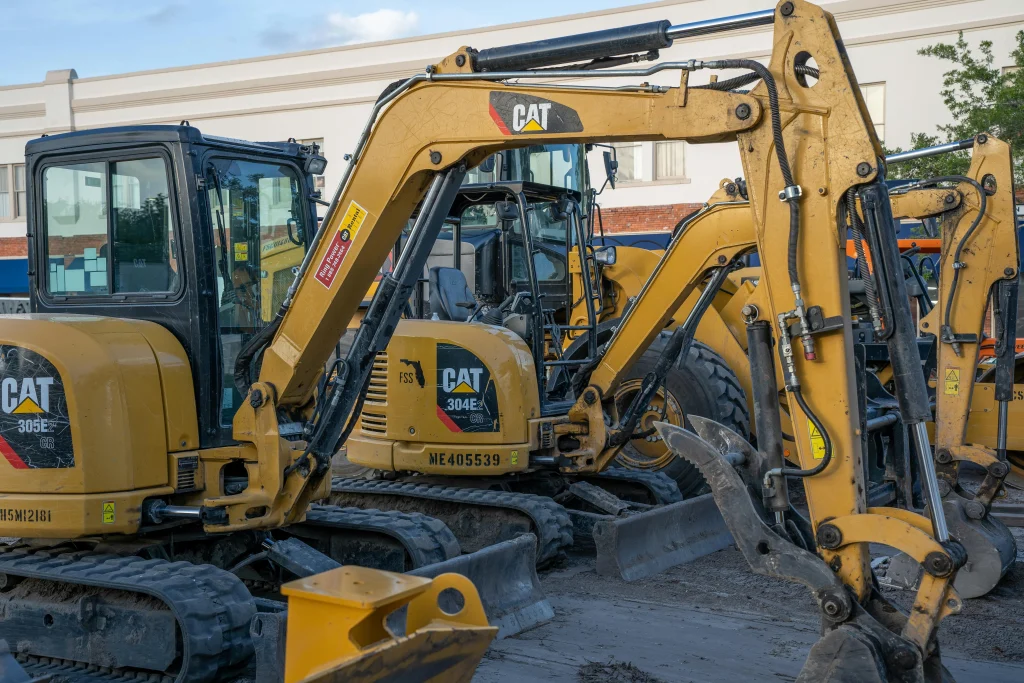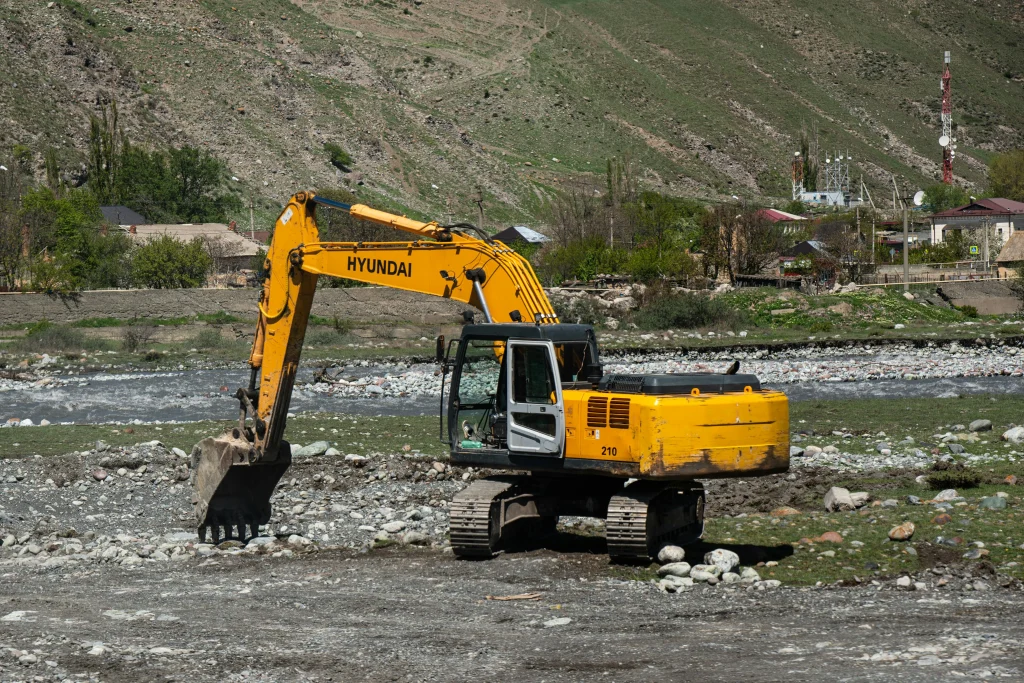Analyzing the Three Primary Types of Bucket Systems for Excavators
Excavator digging tools are crucial components for excavation, material handling, and transport across multiple industries including building sites, mineral extraction, and agricultural operations. Conventional buckets serve well for routine operations in soft to medium-density soils. Reinforced buckets, constructed with wear-resistant alloys, excel in demanding environments such as ore extraction. Customized bucket variants, featuring trenching, angular adjustment, and grid designs, deliver specialized solutions for precise applications like confined-space digging, inclined surface preparation, and debris classification. Optimal bucket selection considers material characteristics, project parameters, and equipment compatibility to maximize operational effectiveness, service life, and cost efficiency. Kingho manufactures an extensive assortment of premium bucket solutions catering to diverse industrial applications.
Fundamentals of Excavator Bucket Technology
Significance of Bucket Attachments in Earthmoving Operations
Excavator digging implements function as primary working components in earthmoving projects. They establish the critical connection between machinery and processed materials. These implements facilitate soil removal, material collection, and substance relocation across various material types including topsoil, granular materials, rock formations, and demolition debris. Their multifunctional nature makes them indispensable for civil engineering projects, resource extraction, agricultural land preparation, and terrain modification. Proper bucket selection directly influences operational pace, project timelines, and budgetary considerations.
Key Considerations for Bucket Selection
Choosing appropriate digging tools requires assessment of multiple parameters. Material composition represents a primary factor, uncompacted soils suit standard buckets, whereas dense or abrasive materials necessitate reinforced configurations. Project complexity also influences selection, surface grading or channel excavation may require specialized attachments. Furthermore, verifying attachment compatibility with excavator specifications prevents equipment overload while maintaining operational efficiency.
Conventional Buckets for General Applications
Characteristics of Standard Bucket Designs
Standard bucket configurations are engineered for versatile applications and remain widely utilized due to their adaptability.
Construction Materials and Service Life
These implements utilize high-tensile steel alloys to enhance structural integrity. This material selection provides abrasion resistance while maintaining optimal weight characteristics for efficient operation.
Performance Across Soil Varieties
Standard buckets demonstrate excellent performance in loose to moderately compacted earth. Their geometric configuration enables effortless material displacement with minimal wear in heterogeneous soil conditions.
Typical Applications for Standard Buckets
Earth Displacement and Surface Preparation
Standard buckets prove ideal for creating trenches or establishing level surfaces. Their design facilitates smooth material collection and precise grading.
Construction Site and Landscaping Utilization
In building projects and landscape architecture, standard buckets effectively remove debris, modify terrain contours, and prepare subsurface foundations.
Recommended Standard Bucket Solutions
For dependable general-purpose solutions, prioritize products emphasizing robustness and operational effectiveness. High-performance excavator buckets manufactured from premium steel alloys deliver extended service duration while maintaining consistent performance across various project types.
Reinforced Buckets for Severe Service Conditions
Structural Enhancements in Heavy-Duty Buckets
Reinforced bucket designs incorporate specialized modifications for extreme working environments.
Reinforced Cutting Edges and Wear Protection
These configurations integrate fortified edges and abrasion-resistant plates fabricated from high-grade alloys such as NM400 or NM500 steel. These protective elements minimize wear when processing hard materials including bedrock or aggregate.
Enhanced Volume Capacity
Engineered with increased volumetric capacity, reinforced buckets efficiently handle substantial quantities of dense materials without structural compromise. This design characteristic improves productivity in challenging operations.
Primary Applications for Reinforced Buckets
Mineral Extraction and Aggregate Processing
In mining and aggregate production, reinforced buckets are indispensable for excavating consolidated strata or loading large mineral fragments.
Handling Abrasive Construction Materials
Their rugged construction makes them particularly suitable for processing sharp-edged aggregates and crushed stone commonly encountered in infrastructure projects.
Advantages of Premium Reinforced Bucket Models
Selecting heavy-duty solutions that combine structural integrity with advanced engineering significantly enhances operational throughput. Products incorporating high-performance steel alloys with integrated wear protection ensure extended operational life under severe working conditions.
Specialized Buckets for Targeted Applications
Specialty Bucket Varieties and Distinctive Features
Custom bucket configurations are engineered for specific excavation requirements, offering specialized functionality and unique geometries. These attachments are essential for operations demanding exacting precision, operational flexibility, or exceptional durability.
Trenching Buckets for Confined Excavation
Trenching buckets are specifically designed for linear excavation in restricted spaces. Their narrow profile enables precise trench formation with minimal adjacent disturbance. These attachments are critical for subsurface utility installation including pipeline and conduit placement.
Angular-Adjustment Buckets for Operational Versatility
Tilt-capable buckets provide exceptional adaptability through adjustable bucket orientation. This functionality reduces equipment repositioning requirements, decreasing mechanical stress and fuel consumption while enhancing productivity. Featuring ±26° tilt capability, these buckets are ideal for slope formation and drainage channel maintenance. Custom tilt ranges are available upon request.
Grid-Design Buckets for Material Separation
Skeleton-style buckets excel in material classification and screening applications. Their high-strength steel construction ensures reliable performance when processing consolidated soils containing aggregate. These attachments find extensive use in municipal projects, timberland operations, and agricultural applications requiring material segregation.
Industry-Specific Applications of Specialty Buckets
The adaptable nature of specialized buckets makes them valuable across multiple sectors. From agribusiness to urban development, they address unique operational challenges with precision.
Agricultural, Silvicultural, and Recycling Applications
In farming operations, skeleton buckets efficiently process organic waste and separate soil from stones. Forestry applications utilize them for processing mixed woody debris. Recycling facilities employ these attachments for waste stream separation.
Precision Engineering in Urban Development
Metropolitan construction projects frequently require exacting precision due to spatial constraints and complex design requirements. Trenching buckets facilitate accurate excavation for underground infrastructure, while tilt buckets enable efficient slope formation without continuous equipment repositioning.
Kingho’s Specialty Bucket Offerings
For application-specific bucket systems, Kingho’s specialized product line delivers exceptional solutions. The company provides customized configurations that ensure reliability across diverse operational scenarios. Whether requiring trenching or tilt functionality, their products guarantee superior operational performance.
Comparative Analysis of Bucket Types
Performance Characteristics Across Bucket Categories
Evaluating bucket systems based on operational efficiency, structural durability, and economic viability assists in determining optimal application suitability.
Efficiency: Conventional buckets perform adequately for general tasks but lack the precision of trenching or tilt-capable models
Durability: Reinforced designs like skeleton buckets incorporate advanced materials including NM400 steel for extended operational life
Cost-Effectiveness: Specialty attachments may command higher initial investment due to advanced features, though long-term operational benefits typically justify expenditure
Selection Criteria for Project-Specific Applications
Optimal bucket selection depends on project specifications and material properties:
Basic excavation in soft soils: Standard bucket configurations suffice
Processing abrasive materials like stone or gravel: Reinforced designs provide superior durability
Precision earthmoving operations: Specialized trenching or tilt bucket configurations are recommended
Advantages of Kingho’s Comprehensive Bucket Portfolio
Partnering with an established manufacturer guarantees high-quality products engineered for performance and longevity. Kingho offers a complete range of excavator attachments addressing varied industrial requirements. Their commitment to technological advancement and customer satisfaction establishes them as a reliable provider of premium earthmoving solutions.
Frequently Asked Questions
Q1: Which industrial sectors derive maximum benefit from specialized excavator buckets?
A: Agricultural operations, forest management, waste processing, and urban development projects particularly benefit from the precision and operational efficiency of specialized bucket designs.
Q2: How do tilt-capable buckets enhance operational productivity?
A: Angular-adjustment buckets permit working angle modification without frequent equipment relocation, reducing fuel consumption and mechanical wear while improving output efficiency.
Q3: Are skeleton bucket configurations suitable for intensive applications?
A: Indeed, skeleton buckets are constructed with high-grade steel alloys and reinforced components, ensuring reliable performance even when processing consolidated soils containing aggregate.



